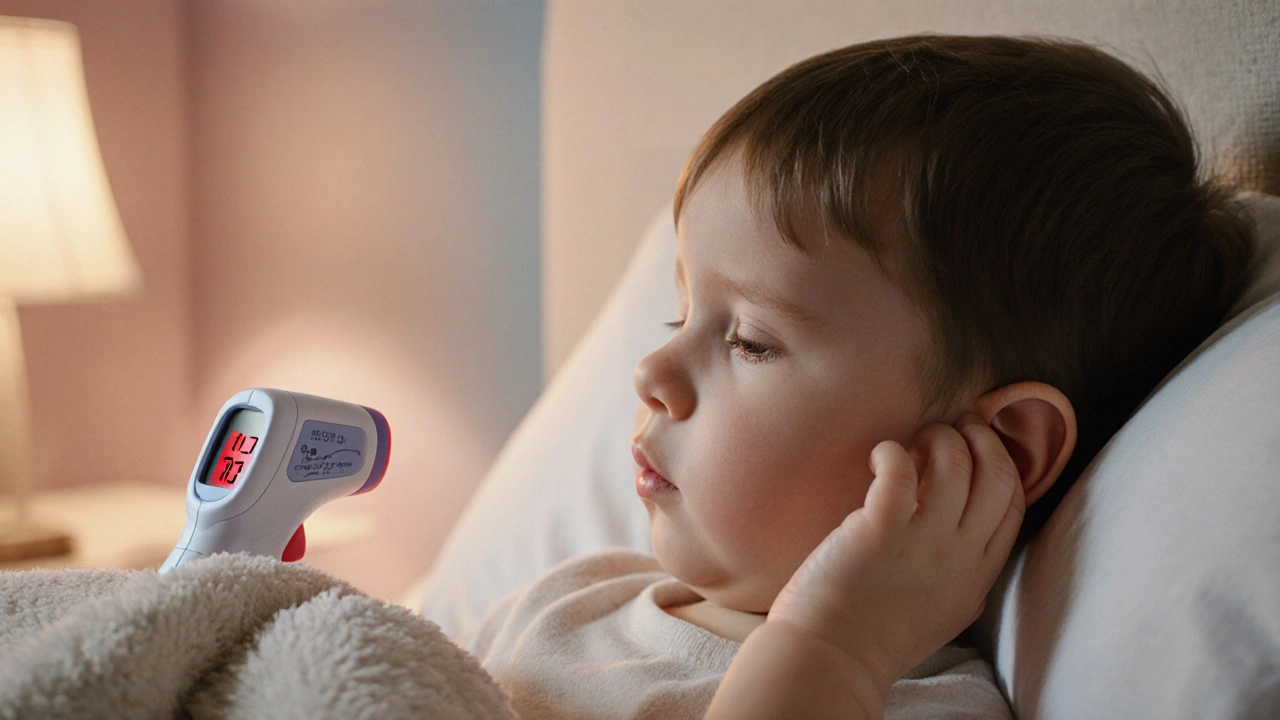Childhood Ear Infection: What Parents Need to Know
When dealing with childhood ear infection, an inflammation of the middle ear that commonly affects kids under five. Also called acute otitis media, it often brings pain, fever, and temporary hearing loss. Otitis media, the medical term for this condition usually requires antibiotics, medicines such as amoxicillin to clear bacterial infection. A routine pneumococcal vaccine, which targets the bacteria most often behind ear infections can cut the risk dramatically.
Key Factors, Treatment Options, and Prevention Tips
First, understand that childhood ear infection isn’t a single disease; it’s a symptom cluster that includes fluid buildup, inflammation, and sometimes infection. The most common cause is a viral upper‑respiratory infection that blocks the eustachian tube, allowing fluid to collect. When bacteria follow, the fluid becomes a breeding ground and symptoms worsen. Knowing this chain helps you spot trouble early – a child who’s been sniffly, irritable, and tugging at an ear likely needs a closer look.
Diagnosis usually involves a quick visual exam with an otoscope. A doctor looks for a bulging, red eardrum or fluid behind it. If the doctor suspects bacterial involvement, the next step is often a short course of amoxicillin, the first‑line antibiotic for uncomplicated cases. Studies show a five‑day course clears infection in most kids while minimizing side effects. For children allergic to penicillin, alternatives like azithromycin or cefdinir are used, but they’re typically reserved for special cases.
Pain management is another piece of the puzzle. Over‑the‑counter options such as acetaminophen or ibuprofen safely lower fever and soothe ache. Warm compresses applied to the affected ear can provide extra relief, especially when a child’s ears feel “full.” Some parents also use ear drops to ease discomfort, but only if the eardrum is intact – a perforated eardrum requires a different approach.
Prevention is where you can make the biggest impact. The pneumococcal vaccine administered in early childhood dramatically reduces the bacteria that cause many ear infections. Additionally, the annual flu shot keeps viral colds at bay, which indirectly lowers ear infection rates. Breastfeeding for at least six months also provides antibodies that protect the middle ear. Limiting exposure to cigarette smoke, both inside the home and in cars, cuts inflammation of the airway and eustachian tube, lowering infection risk.
When an infection recurs frequently – more than three episodes in six months or four in a year – doctors may suggest a tympanostomy tube (ear tube) placement. The tiny tube ventilates the middle ear, prevents fluid buildup, and can improve hearing long‑term. While surgery sounds scary, the procedure is quick, done under light sedation, and most children return to normal activities within a day.
Monitoring hearing is essential because repeated infections can lead to temporary or permanent loss, especially in the critical language‑development years. Simple hearing screens at well‑child visits catch problems early. If you notice a child speaking later than peers, turning up the TV volume unusually high, or asking for repeats often, bring it up with your pediatrician.
Finally, remember that not every earache needs antibiotics. Viral infections resolve on their own, and over‑treatment can foster antibiotic resistance. Watchful waiting – a 48‑hour period of symptom monitoring with pain relief – is an evidence‑based approach for mild cases. If symptoms improve, you’ve avoided unnecessary medication; if they worsen, you can jump to antibiotics promptly.
All of these pieces – cause, diagnosis, medication, pain relief, prevention, and hearing monitoring – form a complete picture of how to handle a childhood ear infection. Below you’ll find articles that dig deeper into each of these areas, from practical tips on pain management to the latest research on vaccine impact. Explore the collection to get a fuller understanding and actionable advice for keeping your child’s ears healthy.
How Fever Signals an Ear Infection: Causes, Symptoms, and When to Get Help
Learn why fevers often accompany ear infections, spot key symptoms, know treatment steps, and find out when a doctor’s visit is essential.
© 2025. All rights reserved.

